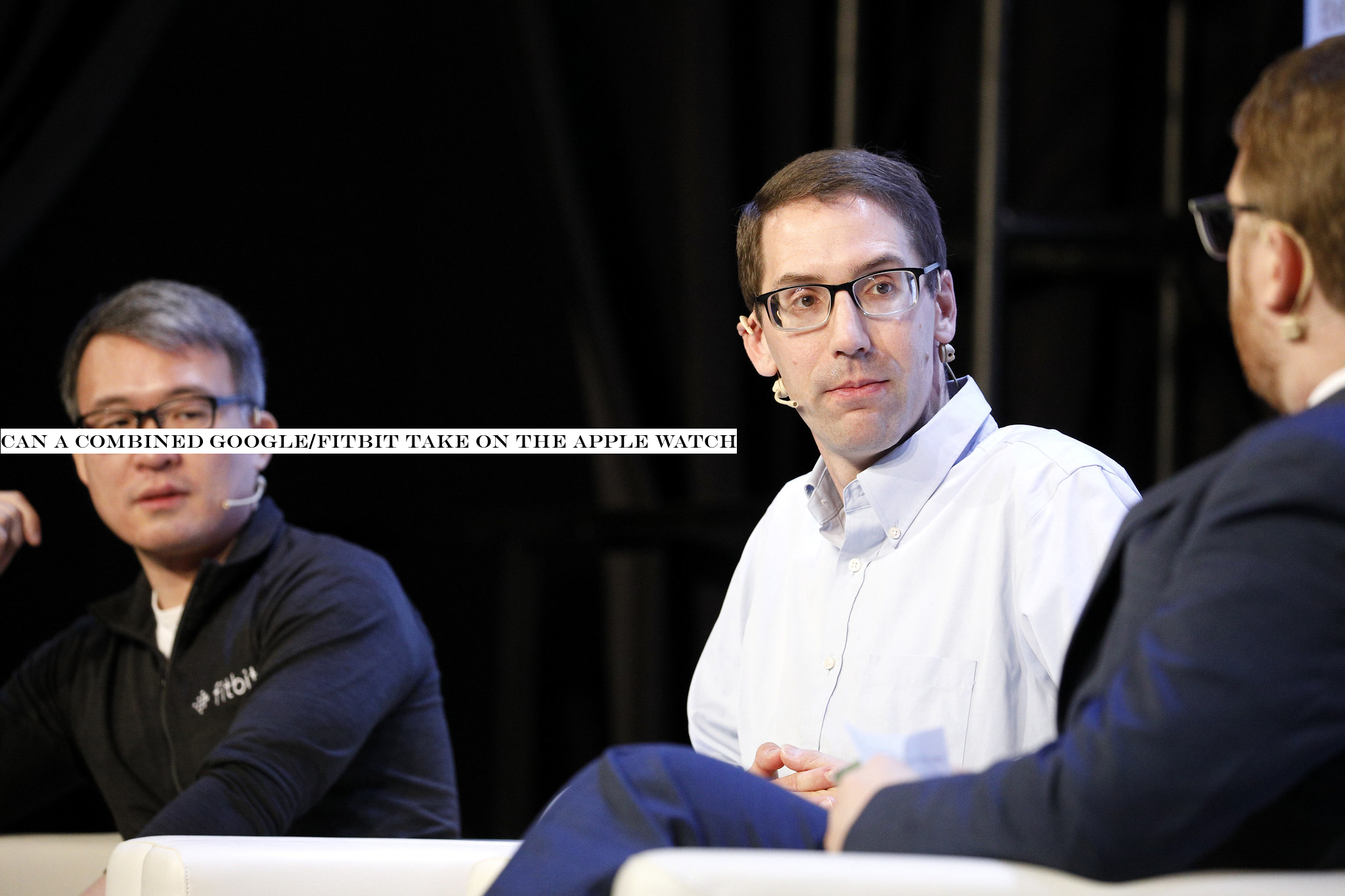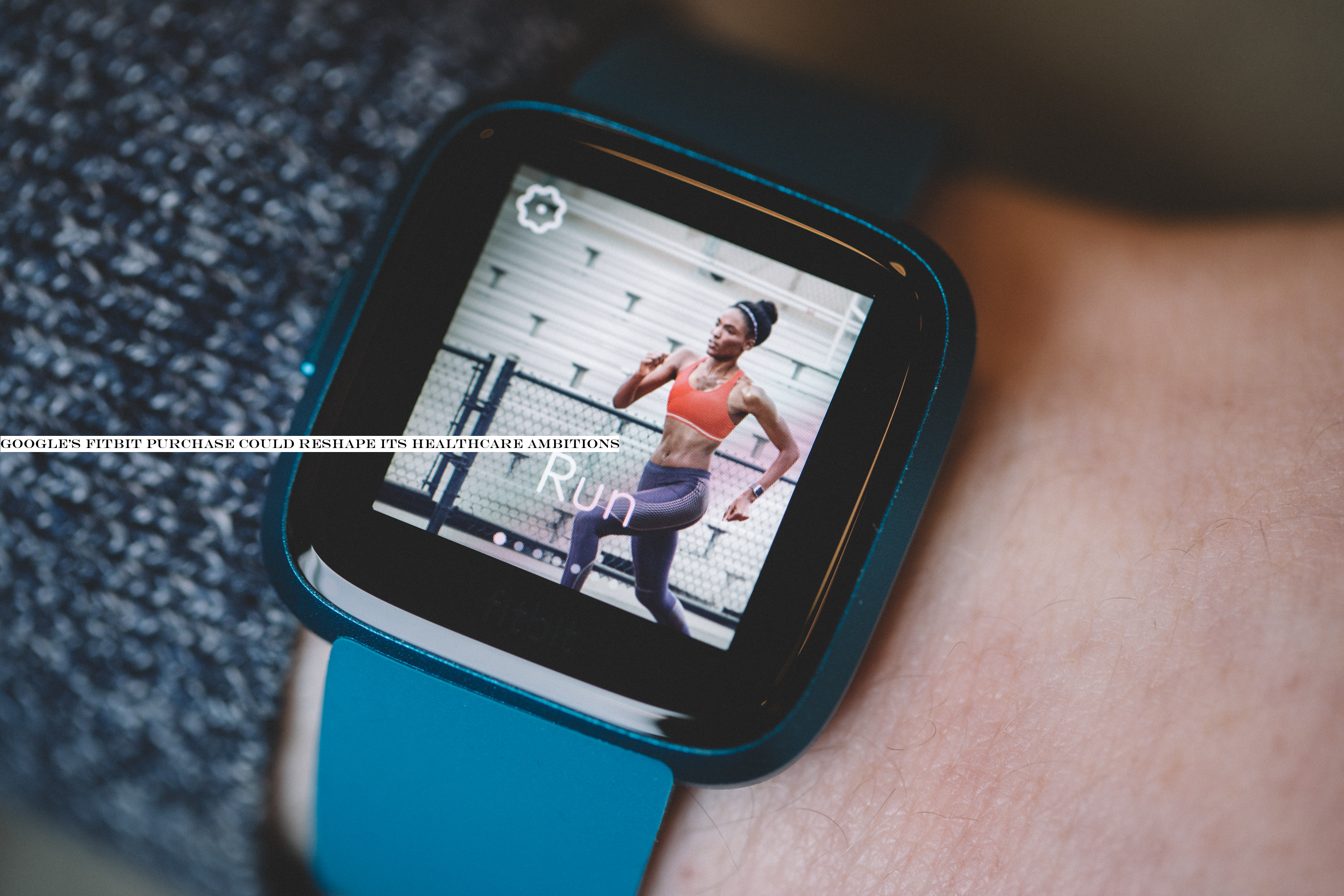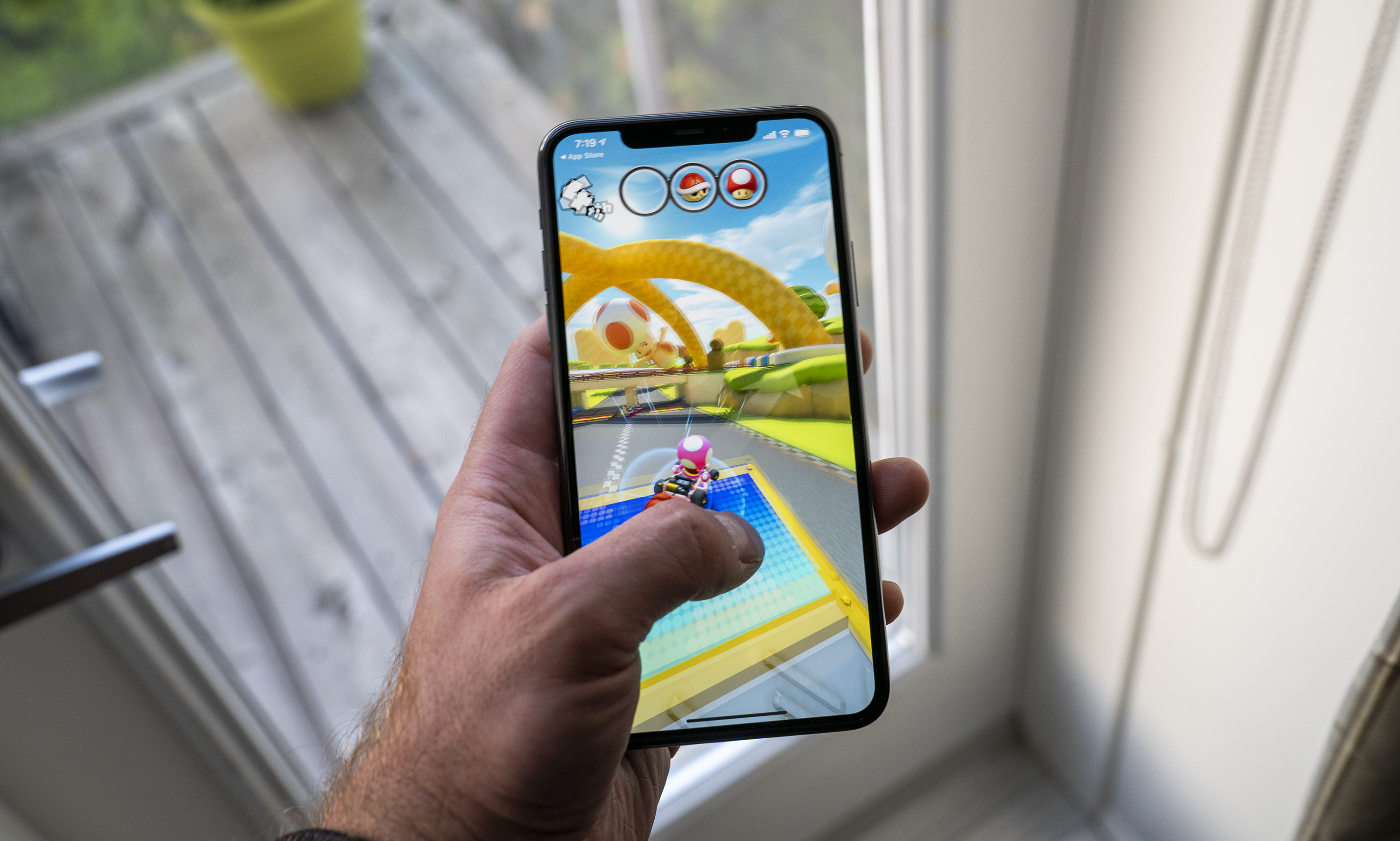Technology

In January 2014, Google announced plans to acquire Nest for $3.2 billion; the acquisition was completed the following day, but since then, Nestintegration has been a controlled burn. Initially, the company existed as a subsidiary of the newly-formed Alphabet Inc., but in early 2018, Google tightened its grip and integrated it directly into its hardware division.
Over the next year and a half, Nest became the face and name of Googlesmart home offering, a division thatgrown quickly as Google Home/Google Nest has become one of the top two players in the U.S. smart home category, rivaled only by AmazonAlexa/Echo offerings.
All the while, wearables have been an also-ran: Google has clearly had an interest in the category, launching Android Wear in 2014. The company partnered with some of consumer hardwarebiggest names, including Motorola, Asus, Sony, Huawei and LG, but to little fanfare. A year ahead the release of Android Wear (now Wear OS), Apple brought its own smartwatch to market, effectively leaving the competition in the dust.
The Apple Watch would soon eclipse the rest of the wearable industry; numbers from Canalys in August 2019 show Apple at 37.9 percent of the total North American wearable band market. Fossil, the only Wear OS partner to crack the top five, is in a distant fifth, with 4.1%.
Samsung and Garmin have found success with their own offerings, but both are far behind Fitbit at second place. Founded in 2007, Fitbit would eventually become synonymous with fitness trackers. A humble startup when it showcased its first product (an eponymous 3D pedometer) on stage at our TC50 event in 2008, Fitbitrise has been an unqualified success.
Fitbit predicted and eventually came to define the wearable zeitgeist, finding itself at the forefront of the next big wave in consumer electronics after the smartphone. As the mobile category has plateaued, wearables continue to grow at an impressive pace. Lettake a moment to appreciate what has been an impressive run.
The last few years, however, have been far rockier as Fitbit stumbled and sputtered. By CEO James Parkown admission, the company failed to embrace smartwatches quickly and fully enough, and as it has so many times in the past, Apple entered and dominated the space, leaving Fitbit reeling with an uncertain future.
- Details
- Category: Technology
Read more: Can a combined Google/Fitbit take on the Apple Watch
Write comment (99 Comments)Google has reached into parent company Alphabet$121 billion cash reserves to spend $2.1 billion on Fitbit, a move into the key consumer health market that places them in more direct competition with rival Apple.
For more than a year, Ftibit and Google have partnered on healthcare applications; last April, Fitbit announced that it would work with Googleapplication programming interface to connect data with electronic medical records via GoogleCloud Healthcare API. That move followed FitbitFebruary 2018 acquisition of Twine Health, which gave the wearables company a consumer health platform which complied with existing federal regulations.
&Working with Google gives us an opportunity to transform how we scale our business, allowing us to reach more people around the world faster, while also enhancing the experience we offer to our users and the healthcare system,& said Fitbit CEO and co-founder James Park at the time of the 2018 Google partnership.
Companies throughout the healthcare industry are pushing to get closer to patients, and wearables have opened a new window into their health. Additionally, the technology can potentially encourage patients to pursue preventive healthcare measures, rather than seeking care after they&re ill.
&All of us… we&re pursuing the same thing,& said a prominent healthcare executive at a multinational medical device manufacturer. &We see a healthcare system thathighly inefficient with a lot of waste that is very much episode-related, where we all know health is dynamic and continuous.& Gaining &better insight into health and disease drivers and interventions at the right place and the right time is the holy grail.&
Privacy concerns abound
The biggest challenge for Alphabet and Google with this acquisition is privacy; the company has already faced massive criticism for its push into healthcare in the U.K. regarding concerns about how it would handle sensitive health information. The technology industryhabit of releasing minimum viable products doesn&t work in an industry where complications can literally become a matter of life and death.
Sensing inevitable concern around Googleupcoming access to a bevy of health data, Rick Osterloh, GoogleSVP for devices and services, offered that the company will not use user information for advertising. &We will never sell personal information to anyone,& he wrote. &Fitbit health and wellness data will not be used for Google ads. And we will give Fitbit users the choice to review, move, or delete their data.&

Competition with Apple
Those privacy concerns stand in direct contrast to the obvious competitor driving this acquisition forward — Apple. The Cupertino-based king of consumer hardware has set itself apart from other consumer tech companies through its professed emphasis on privacy, a position that Apple will likely leverage further as it continues to make deeper forays into health.
- Details
- Category: Technology
Read more: Google’s Fitbit purchase could reshape its healthcare ambitions
Write comment (99 Comments)The mobile version of Nintendo iconic racing franchise, Mario Kart Tour, will soon support multiplayer races, bringing the game closer to its competitive roots. A limited multiplayer beta test is planned for December, just in time for holiday laziness, but only for paying subscribers — the rest of us will have to wait.
Mario Kart has had a focus on multiplayer since its first (and best, in my opinion) appearance on the SNES, with multiple modes available pitting players together in real time. So despite Mario Kart Tourgeneral excellence as far as gameplay and variety, players have been disappointed by the lack of that core aspect of the game.
Sure, you can post high scores and best times, but thatnothing compared with the feeling of coming from behind in a hard-fought race and beating out half a dozen tough competitors.

Well, players will soon have that opportunity — if they happen to be Gold Pass subscribers. Thatthe subscription tier that gives access to extra content in the &free to start& game, and will be a requirement to join the beta.
Naturally this will provoke ire among players who feel they are owed not just a free game, but a free game that gives them everything they want for free. And in fact they may eventually get that, but itprobably smart for Nintendo to limit this experience at first to paying customers so they can stress-test, balance gameplay and so on. A subpar multiplayer experience is a good way to turn off otherwise interested players.
Still, this feeds into a larger dissatisfaction among gamers with Nintendoonline and multiplayer strategy. The subscription service required for many popular games on the Switch comes with a selection of Nintendo and Super Nintendo Games, but beyond that the benefits are minimal, and features standard on other platforms for years — voice chat, for instance — are absent or long in coming.
At only $20 a year ithardly a big investment, but subscription fatigue is growing among tech-savvy consumers and they are cutting things out where they can. Hopefully Nintendooffering will solidify and survive.
- Details
- Category: Technology
Read more: Mario Kart Tour will test real-time multiplayer in December
Write comment (99 Comments)The Daily Crunch is TechCrunchroundup of our biggest and most important stories. If you&d like to get this delivered to your inbox every day at around 9am Pacific, you can subscribe here.
1. Google is acquiring Fitbit for $2.1 billion
Google will pay $7.35 per share for the wearables company — an all-cash deal that values Fitbit at $2.1 billion.
While Google has invested plenty in its own in-house development, buying Fitbit represents a step-change, and the opportunity to take advantage of years of effort focused specifically on the wearables category.
2. Apple TV+ now live, with one year free for new iOS, Apple TV and Mac purchases
At launch, you&ll find &The Morning Show,& &See,& &For All Mankind,& &Dickinson,& &Snoopy in Space,& &Ghostwriter& and &Helpsters,& as well as the documentary feature &The Elephant Queen& and the talk show &OprahBook Club.& Some of these offer the first three episodes at launch, while others include the full season.
3. Sidewalk Labs (Alphabetgrand experiment in smart cities) will move forward with Toronto project
Sidewalk Labs and Waterfront Toronto (the regulatory body overseeing the project) have come to an agreement that will limit the scope of the Sidewalk development — intended as aproving ground for the latest thinking in sustainable design — and make the company work more closely with oversight agencies on the construction of the 12-acre parcel.
4. Altria writes down $4.5 billion from its investment in Juul
Thatroughly one-third of the $12.8 billion that the tobacco giant had invested into Juul a little less than one year ago.
5. EHang, maker of autonomous flying shuttles, files for $100 million IPO
The company, which has been flying demonstration flights with passengers on board for a while now, is gearing up to launch its first commercial service in Guangzhou after getting approval from local and national regulators to deploy its drones in the area.
6. Japanese instant-credit provider Paidy raises $143 million from investors, including PayPal Ventures
This is the largest investment to date in the Japanese financial tech industry, according to data cited by Paidy, and brings the total investment the company has raised so far to $163 million.
7. Announcing TechCrunchnew commenting system
There are a bunch of new features that you can read about in the post, but what I&m really hoping is that this makes a big dent in the spam.

- Details
- Category: Technology
Read more: Daily Crunch: Google is buying Fitbit
Write comment (98 Comments)Climate risk, including extreme events and the related pressures our environment, are fundamentally affecting the way businesses and governments operate — both tactically and strategically. Increasing climate volatility is causing food supply disruptions and increasing pressure on Enterprises (including financial institutions, insurers and producers) to disclose whatgoing on.
The trouble is, while there is a lot of data about all this, its complexity, incompleteness and sheer volume is too vast for humans to process with the tools available today. So just as the climate changes, we are faced with &data chaos.& Equally, other parts of the world suffer from data scarcity, making it much harder to provide useful and timely analysis.
So the challenge is to address these issues simultaneously. So a new startup, Cervest, has created an AI-driven platform designed to inform the decision-making capabilities of businesses, governments and growers in the face of increasing climate volatility.
Cervest, has now closed a £3.7 million investment round to fund the launch of its real-time, climate forecasting platform.
The round was led by deep-tech investor Future Positive Capital, with co-investor Astanor Ventures . The seed-stage funding round brings the companytotal funding to more than £4.5 million.
Built on three years of research and development by a team of scientists, mathematicians, developers and engineers, Cervest says its Earth Science AI platform can analyze billions of data points to forecast how changes in the climate will impact the future of entire countries, right down to individual landscapes.
It does this by combining research and modeling techniques taken from proven Earth sciences — including atmospheric science, meteorology, hydrology and agronomy — with artificial intelligence, imaging, machine learning and Bayesian statistics.
Using large collections of satellite imagery and probability theory, the platform can identify signals, or early-warning signs, of extreme events such as floods, fires and strong winds. It also can spot changes in soil health and identify water risk.
Cervest says the platform could do such things as reveal the optimum location to build a new factory; warn a wheat grower that their crop yield isn&t expected to meet its targets; or be used by insurers to help them set premiums for the next 12 months.
The team comes from a network of more than 30 universities, including Imperial College, The Alan Turing Institute, Cambridge, UCL, Harvard and Oxford, and has published more than 60 peer-reviewed scientific papers.
A beta version of the platform is due to launch in Q1 2020.
Iggy Bassi, founder - CEO, Cervest said: &Our goal is to empower everyone to make informed decisions that improve the long-term resilience of our planet. Today decision-makers are struggling with climate uncertainty and extreme events and how they are affecting their business operations, assets, investments, or policy choices.&
Sofia Hmich, founder, Future Positive Capital said: &With reports suggesting we have fewer than 60 years of farming left unless drastic action is taken, the need for science-backed decisions could not be greater. Businesses and policymakers hold the key to change and with access to Cervestproprietary AI technology they can start to make that change a reality at low cost — before ittoo late.&
Bassi previously ran the impact-led agribusiness GADCO, which was supported by Acumen Fund, Soros, Gates Foundation, World Bank and Syngenta . Its impact was featured in UNDP, World Economic Forum, FT, The Guardian and Huff Post. He previously built a software company focused on data analytics.
Cervest was inspired by Bassiexperience building a farm-to-market agribusiness whilst confronting first-hand the impacts of climate and natural resource volatilities.
The Cervest team includes eight scientists and four PhDs. Between them, they have published more than 60 peer-reviewed scientific papers with more than 3,000 citations in high-profile titles, including Nature, Proceedings of the National Academy of Sciences and The Royal Statistical Society.
- Details
- Category: Technology
Read more: Cervest raises £3.7M for Earth Science AI platform to predict climate effects
Write comment (93 Comments)MITComputer Science and Artificial Intelligence Laboratory has come up with a clever way for its small cube-like robots, which can move on their own, to communicate and coordinate with one another for self-assembly. The behavior is described by MIT researchers as somewhat &hive-like;& in the video above you can see what they mean by that.
These cube bots can roll across the ground, navigate up and across each other and even jump short distances. And thanks to recent improvements made by the team working on the project, they also can communicate in a basic way using unique barcode identifiers on the faces of the blocks to allow them to identify one another. These 16 blocks can now use their communication system and their ability to move themselves around to perform tasks including producing various shapes, or even following arrows or light signals.
Their current abilities are pretty limited, but the researchers envision a time when a larger and more advanced version of this system could be used to deploy efficiently self-assembling bots that can create structures like bridges, ramps or even staircases for use in disaster response or rescue scenarios. Of course, they also theorize these things might be pretty attractive for more mundane applications, like gaming, too.
- Details
- Category: Technology
Read more: MIT’s self-propelled block robots can now manage basic swarm coordination
Write comment (95 Comments)Page 466 of 5614

 20
20